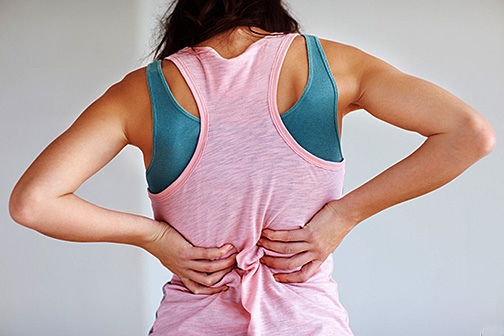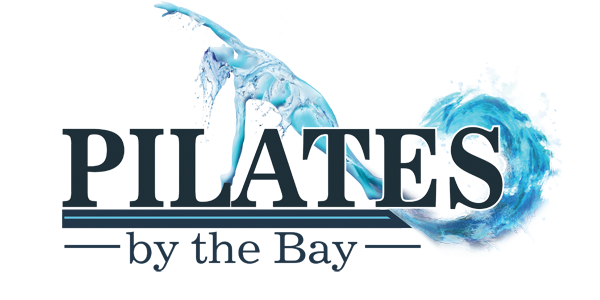Although the benefits of Pilates reach far beyond relieving back pain, the reason many clients visit our studio for the first time is from seeking relief for this prevalent condition. In fact, a staggering 31 million Americans experience low-back pain at any given time.1
A few interesting facts about back pain:
- Low back pain is the single leading cause of disability worldwide, according to the Global Burden of Disease 2010.
- One-half of all working Americans admit to having back pain symptoms each year.2
- Back pain is one of the most common reasons for missed work. In fact, back pain is the second most common reason for visits to the doctor’s office, outnumbered only by upper-respiratory infections.
- Most cases of back pain are mechanical or non-organic—meaning they are not caused by serious conditions, such as inflammatory arthritis, infection, fracture or cancer.
- Americans spend at least $50 billion each year on back pain—and that’s just for the more easily identified costs.3
- Experts estimate that as many as 80% of the population will experience a back problem at some time in our lives.4

What Causes Back Pain?
The back is a intricate structure of muscles, ligaments, bones, and joints. You can sprain ligaments, strain muscles, rupture disks, and irritate joints, all of which can lead to back pain. While sports injuries or accidents can cause back pain, sometimes the simplest of movements—for example, picking up a paper clip from the floor— can have agonizing results. In addition, arthritis, poor posture, obesity, and psychological stress can cause or exacerbate back pain. Back pain can also directly result from disease of the internal organs, such as kidney stones, kidney infections, blood clots, or bone loss.
Pilates as a Treatment for Back Problems
The fundamental principles of Pilates are consistent with an exercise program that promotes back wellbeing. In particular, learning awareness of neutral alignment of the spine and strengthening the deep postural muscles that support this alignment are important skills for those who suffer from back pain.
People with pain stemming from excessive movement and degeneration of the intervertebral discs and joints are particularly likely to benefit from a Pilates exercise program. In addition, postural asymmetries can be improved, thus decreasing wear and tear resulting from uneven stresses on the intervertebral joints and discs.
Pilates improves strength, flexibility, and agility of the muscles of the hip and shoulder girdle. Fluid and supported movement through these joints helps prevent unnecessary force on the vertebral column.
The Pilates program also teaches awareness of movement habits that may stress the spine, and helps the client change these habits to those that preserve neutral alignment. Awareness of excessive tension and the use of proper focus helps the client use the body efficiently.
The Proof?…Study Finds Pilates Helps Back Pain Sufferers More than Other Therapies
Title of study: Pilates-Based Therapeutic Exercise: Effect on Subjects With Nonspecific Chronic Low Back Pain and Functional Disability: A Randomized Controlled Trial Research team: Rochenda Rydeard PT, MSc, Andrew Leger PT PhD, Drew Smith PhD Published in the Journal of Orthopedic & Sports Physical Therapy
Low-back pain is the most common cause of job-related disability in the United States, according to the National Institute of Neurological Disorders and Stroke. Odds are, you’re among the sufferers of this persistent, chronic and painful health condition — and you’re always looking for better ways to find relief without taking pain medication all the time.
One method worth trying?… Pilates.
Recent research supports what many Pilates experts and enthusiasts have been saying for decades: That doing Pilates is not only great for sculpting a strong, lean body—but also for preventing and treating low-back pain.
According to a small, randomized, controlled study published in the Journal of Orthopedic & Sports Physical Therapy, participants who practiced Pilates over a four-week period experienced more relief from their symptoms than those who went through typical treatment programs.
Due to the growing popularity of Pilates in therapeutic settings, researchers from Queen’s University in Kingston, Ontario, decided to test whether Pilates exercises were effective in improving the condition of patients.
The investigators randomly assigned 39 active adults ages 20–55 with chronic low-back pain to either a Pilates training group or a control group. The experimental group exercised on Pilates equipment, while the control group received the usual care, defined as consultation with a physician and other specialists and healthcare professionals, as necessary. Treatment sessions were designed to train the activation of specific muscles thought to stabilize the lumbar-pelvic region.
Post-testing revealed that the Pilates participants had significantly lower levels of functional disability and pain intensity than the control subjects.
Pilates Considerations for Back Pain Patients
Before starting any new exercise system, it is always advisable to check with a physician or other healthcare provider and follow the following tips to prevent back pain.
Tips to Prevent Back Pain:
- Maintain a healthy diet and weight.
- Remain active—under the supervision of your doctor.
- Avoid prolonged inactivity or bed rest.
- Warm up or stretch before exercising or other physical activities, such as gardening.
- Maintain proper posture.
- Wear comfortable, low-heeled shoes.
- Sleep on a mattress of medium firmness to minimize any curve in your spine.
- Lift with your knees, keep the object close to your body, and do not twist when lifting.
- Quit smoking. Smoking impairs blood flow, resulting in oxygen and nutrient deprivation to spinal tissues.
- Ensure that your computer workstation is ergonomically designed with your monitor at eye level
Start your practice today by attending classes or private Pilates training at Pilates By The Bay!
View Our Schedule to Book Your Next Class.
References:
1. Jensen M, Brant-Zawadzki M, Obuchowski N, et al. Magnetic Resonance Imaging of the Lumbar Spine in People Without Back Pain. N Engl J Med 1994; 331: 69-116.
2. Vallfors B. Acute, Subacute and Chronic Low Back Pain: Clinical Symptoms, Absenteeism and Working Environment. Scan J Rehab Med Suppl 1985; 11: 1-98.
3. This total represents only the more readily identifiable costs for medical care, workers compensation payments and time lost from work. It does not include costs associated with lost personal income due to acquired physical limitation resulting from a back problem and lost employer productivity due to employee medical absence. In Project Briefs: Back Pain Patient Outcomes Assessment Team (BOAT). In MEDTEP Update, Vol. 1 Issue 1, Agency for Health Care Policy and Research, Rockville.
4. In Vallfors B, previously cited.


